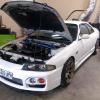Calln All R34 Owners
Announcements
-
Similar Content
-
Latest Posts
-
Not ready yet, but maybe later in the year?
-
Hi Luke, haven't thought about it a lot, trying to get the car into the paint shop first. Did you want to make an offer? As stated above, I'm just looking for fair market price.
-
Ask a powder coater? Or ask 31GUN on performanceforums, who is Barrel Bros.
-
Do you have a price in mind yet?
-
Yeah. I believe the fear of annealing the alloy and weakening it, Every online discussion has someone saying it's bad and potentially a risk when powder coating forged wheels.
-








Recommended Posts